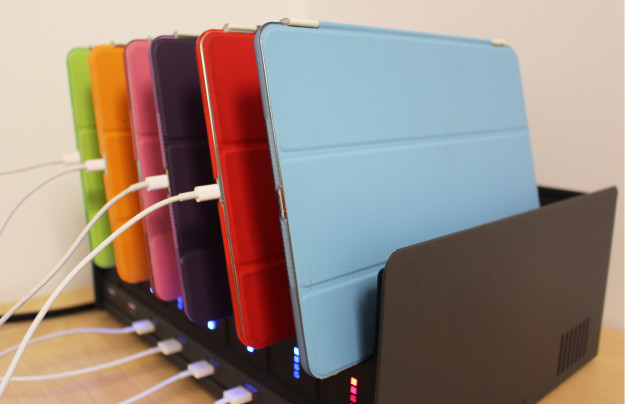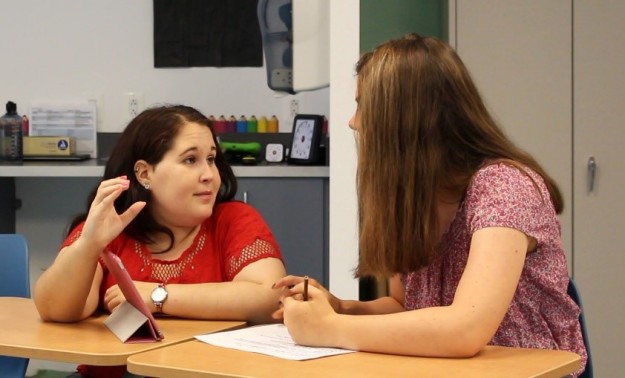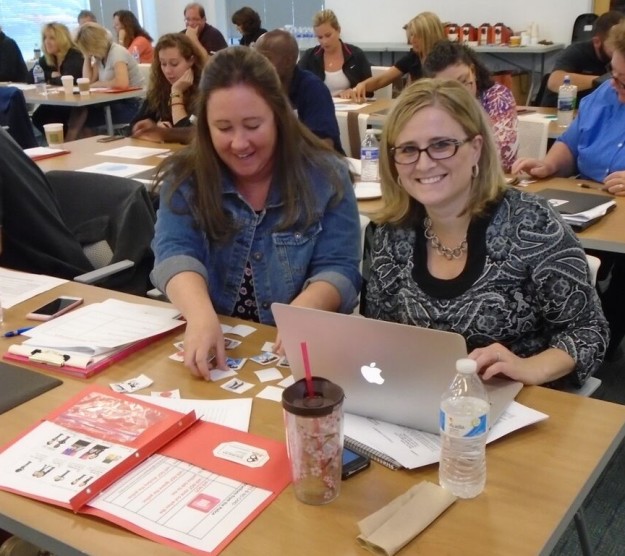Hussman Institute intern Arsema Ghirmai and associate clinical researcher Fernanda Orsati read with program participant Neil.
At the Hussman Institute for Autism, staff teach minimally-verbal program participants to use iPads and hand gestures to communicate requests like, “I want a drink,” or “I need a break.” It’s certainly important for individuals with autism to learn to communicate their basic needs, but full participation in one’s community requires social communication—where the reward is not as tangible as a snack or a break from an activity. That’s why HIA support staff also work on developing more conversational use of the iPads to make comments like, “Daniel’s book is funny.”
A team at the University of Arkansas produced data that provide evidence that iPads can indeed facilitate social communication in children with autism. They also provided a suggested training routine for teaching iPad use. “I think the iPad piece is a great addition to the research base,” said Ashlyn Smith, associate clinical researcher at the Hussman Institute for Autism, “That’s why I got interested in looking at the iPads—they are increasingly being used as tools for communication and we need research to demonstrate their efficacy.”









